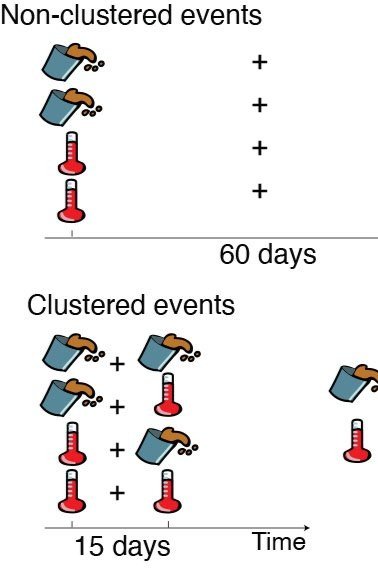research
Microbes do not live in isolation, but form complex communities. It is such form of communal living that underpins vital processes for Earth’s functioning, including the turnover of organic matter and nutrient cycling. We are interested in understanding how such communities assemble and what determines their structure and function.
To this end, we study microbial microcosms where communities obtained from natural habitats assemble in well-defined and easy-to-tune environmental conditions, in combination with phenotyping of community members. We use results from such experiments to generate hypotheses that we can test in real-world settings or using the wealth of publicly available microbiome data.
This approach allows us to connect metabolism and related traits (e.g., growth rate) to relevant community properties, including diversity, composition, and function, and to identify unifying principles for how microbial communities modify and respond to their environment.
Nutrient-mediated interactions and community diversity
Microbes are the most metabolically diverse form of life on the planet. They can use a long list of sources of carbon to sustain their growth, which includes pollutants and plastic components. The availability of carbon sources in nutrient pools, i.e., the number of different substrates, their type, and concentration, determines which species are able to grow, at which rate, and the abundance they can reach. We are interested in understanding how the metabolic network that assembles in a particular community depends on the availability of carbon sources, and what this means for the diversity and structure of such community. We have probed how the number of carbon sources in the environment determines the diversity of bacterial communities in soil microcosms (Dal Bello et al. 2021) and we are currently exploring how the concentration of sugars and organic acids shapes interspecies competition and community structure. We will expand our experiments to include sources of phosphorus and nitrogen.
Ecological drivers of the distribution of fast and slow growers
A pervasive concept in ecology is the distribution of fast and slow growers. For example, patterns of successions after a disturbance in plants, corals, and other macroorganisms are usually described in terms of fast growers paving the way for slow growers. Grow rate is indeed a key component of life strategies of both macro- and microorganisms, determining their ability to survive and compete in a given environment. We are exploring how environmental variables, by predictably affecting growth rates, shape the outcome of species competition and the structure of microbiomes at different spatial and temporal scales (see our paper on temperature and the ocean microbiome Abreu, Dal Bello et al. 2023). As key environmental variables are altered by climate change, it is crucial to predict how their effects on species traits such as growth rates translate to changes in community patterns.
Memory and community response to environmental perturbations
As perturbation regimes are altered by environmental change, it is crucial to understand and possibly predict community dynamics. However, how communities respond to perturbations depends not just on current conditions, but also on previous states and environmental history (see Dal Bello et al. 2017, Rindi et al. 2017, Dal Bello et al. 2019). In other words, communities, but also populations and entire ecosystems, have memory. We are interested in understanding what aspects of “ecological memory”, either biotic – such as the prevalent mode of metabolic interactions between community members – and/or abiotic – for example available energy in the environment – are important to predict future community states.



